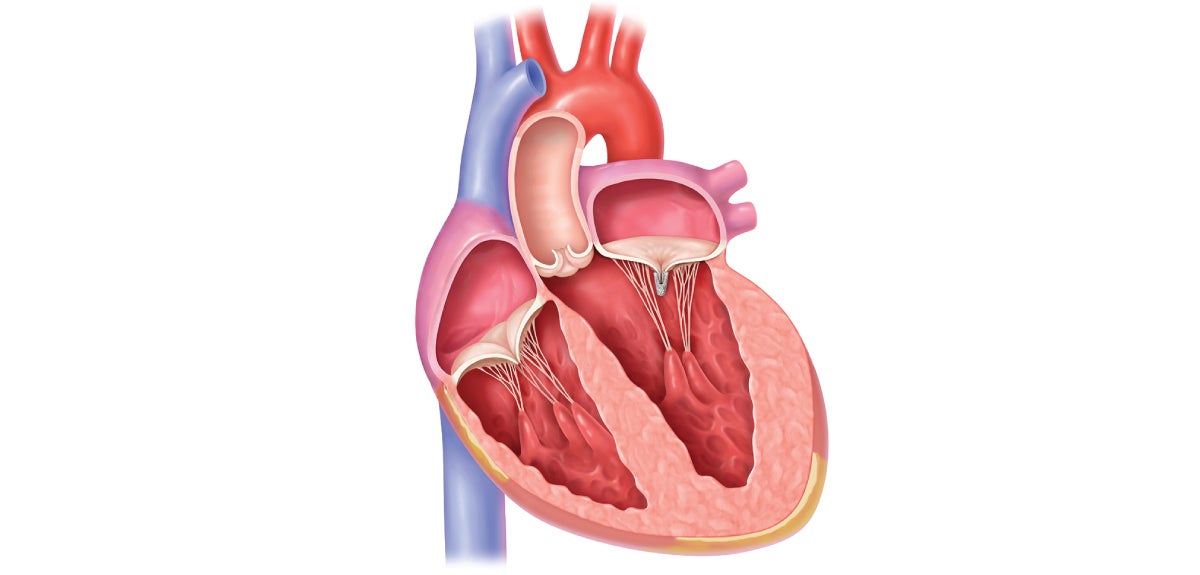MitraClip
A life-changing solution for mitral valve regurgitation
When it comes to blood flow, the goal is to cycle from “point A” (the heart) to “point B” (the body) and back. But what happens if some blood flows backward? In the case of mitral regurgitation, the mitral valve – which operates as a one-way door between the heart and body – does not close properly. This means that rather than exiting, some blood gets pulled back into the heart.
Over time, your heart size expands to compensate for the additional blood volume, and while this may seem like a good thing since a larger heart means more blood flow, the heart muscle becomes weaker as it grows. If not treated in time, mitral regurgitation can lead to atrial fibrillation, hypertension and heart failure.
Thanks to MitraClip – an innovate, minimally-invasive heart procedure – treating mitral regurgitation is safer and easier than ever before. And there’s no need for open-heart surgery.
Why choose MitraClip?
The Mitraclip procedure is performed through a small hole in the groin, a catheter tube is routed through vessels in the leg up the right side of the heart and then to the left side of the heart and into the mitral valve.
During the procedure, one or more clips may be securely attached to the mitral valve to reduce regurgitation. This is a very specialized technique performed by an interventional cardiologist. In most cases, the patients are discharged home the following day.
- Minimally Invasive: No need for open-heart surgery. The MitraClip procedure is performed through a small incision, so you’ll have a quicker recovery time and less risk of complications.
- Proven Results: Over 100,000 patients worldwide have experienced significant symptom relief, with many reporting increased energy and better quality of life after treatment.
- Fast Recovery: Most patients return home the same day or the following day, with fewer complications compared to traditional surgery.
- Life-Saving Treatment: If you suffer from severe mitral regurgitation and have not responded well to medication, MitraClip can significantly improve your heart function and quality of life.
Who may be a candidate for MitraClip?
You may be a candidate for MitraClip if you have one or more of the following symptoms:
- Abnormal heart murmur or sounds
- Shortness of breath, especially after physical activity or when lying down.
- Tiredness
- Heart palpitations
- Swollen ankles and feet
Get more information
If you are experiencing any of the symptoms listed above, be sure to talk to your cardiologist to discuss possible treatments. If you don’t have one, or to learn more about MitraClip, please contact our Structural Heart Program Coordinator at (559) 450-4208.

